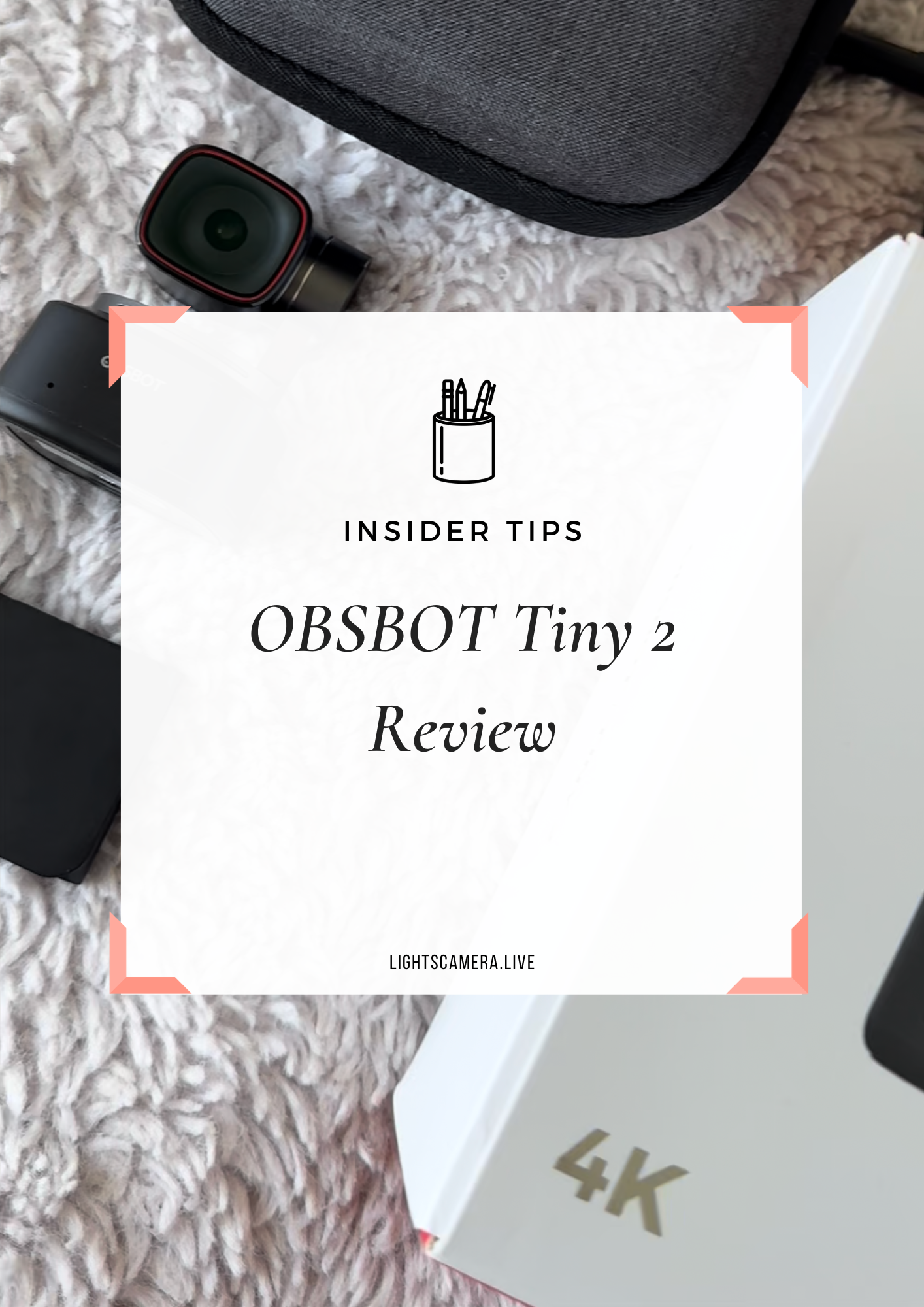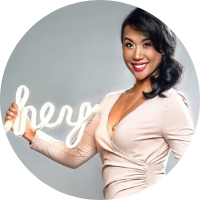How many of you have a 2021 goal to create new and exciting content for your live streams?
Whether you are new to live streaming and creating video content, or if you've been in the game for a while, you need to think about your content in terms of a framework.
I talked about content frameworks in my recent episode of Luria Petrucci’s show, Go Live Now. In short, a content framework is a strategy for creating and sharing content with your audience.
There are many different types of content frameworks you can use to take your content and your business to the next level. You can use one or a combination of multiple to brainstorm your ideas and share content with your audience.
The steps I gave in the video are exactly what I do for my own live shows, Lights Camera Live and Digital Confetti, and for my clients.
With these content frameworks, I'll show you how to develop ideas to captivate your audience level up your live stream.
Let's get started.
What are the steps I take to create a content framework?
When I have an idea for a new live show or if I'm working with a client to produce their show, we first have a pre-frame conversation.
During the pre-frame conversation, we follow Jonah Berger's six STEPPS for contagious content, from his book, Contagious: Why Things Catch On. In his book, Berger discusses content and how to make sure it is shareable by everyone, and in doing so, the content goes viral.
I follow each of these steps in my pre-frame conversations: social currency, triggers, emotion, public, practical value, and stories.
The first step, social currency, is the idea that most people care about how they appear to others when sharing content. They want to look smart and cool, and have authority with their audience.
In the second step, you want to think about triggers. An effective trigger in your content framework is having a theme such as "Mindset Monday" or "Testimonial Tuesday."
Step three is emotion. When we care, we share. You want to create content that sparks emotion, whether it's joy, happiness, curiosity, or even anger.
Next is public. Always remember that the more public something is, the more likely people will imitate it. To inspire your audience, your content should be built to show and built to grow.
Step five is practical value. Share content to teach your audience something! Think about tips, tricks, hacks, or step-by-step guides. When content has practical value, your audience will be more likely to share it with others.
Finally, the last step to the pre-frame conversation is stories. They can be testimonials or the background on why you started your show. It's the information that travels under what seems like idle chatter but is actually what really captivates an audience and lets them get to know you.
“Brainstorm exciting, share-worthy content ideas by following Jonah Berger’s STEPPS for contagious content: social currency, triggers, emotion, public, practical value, and stories.”
How to implement content frameworks for your live show
After having the pre-frame conversation, you should have a good idea of what contagious content needs to be shared; what kind of stories, triggers, and emotions will motivate your audience to take action.
Next, you will create content pillars. Grab a notepad or your iPad and draw out three "buckets" for the pillars. Ask yourself (or your client), what are the three things you want to focus on?
Usually, it is something like Educate, Entertain, and Inspire—especially if you are building your business. Add each of these as headers to the top of your pillars.
Start thinking about your answers from the pre-frame conversation and input them into each pillar.
For example, if your show is about branding, add a hashtag to the Educate pillar, such as #MarketingMonday. In Entertain, you can write down a podcast idea, and in Inspire, add testimonials.
Your content pillars don't need to be perfect. Remember, you are just brainstorming a content framework to help you develop your content calendar.
After you create content pillars, move on to my favorite step: an exercise to get the creative juices flowing. It's called the 10 by 10 exercise. Grab a piece of paper and create two columns.
First, write down the top 10 frequently asked questions about your business, your product, or your service. You probably get these questions in your DMs or emails. Maybe you even have an FAQ page on your website.
Now in the second column, create a list of the top 10 should ask questions. These are the questions people should be asking, but they don't know (because you're the expert, not them.)
If your show is about live streaming, example FAQs might include:
What kind of lighting should I have?
What type of camera should I use?
What live streaming software should I buy?
But what you really should be asking is:
How do I make my show searchable all across the internet?
How do I repurpose the content on my show?
How can I find sponsors?
And so on.
Once you complete the 10 by 10 exercise, you now have 20 ideas on what to talk about. That's 20 weeks of content right there!
“Try out the 10 by 10 exercise to create 20 content ideas in 10 minutes. Write out 10 FAQ questions about your business, your product, or your service. Then, write down 10 should ask questions. Now, you have content for the next 20 weeks.”
Now you can group your content into beginner, intermediate, and advanced sections. Take the questions from the 10 by 10 exercise and break them down into each stage. Each question and stage can be its own show.
After creating your content pillars and running them through the filters of the 6 STEPPS, you can repurpose the content of your show by bucketizing them into the ACES framework.
My good friend, Dr. Lindsay Padilla, developed the ACES framework when she initially launched On Course Social and since then, it stuck with me.
ACES stands for Authority, Connection, Engagement, and Sizzle.
At times, your show will emphasize your Authority, or your expertise. You are the expert on whatever your show's topic is.
Next is Connection, where you share your story. This is when you tell people about why you launched your show and how your business, product, or service changed lives to humanize your brand.
In Engagement, ask your audience questions! Get to know them and spark conversations. If your social media platforms, such as Facebook, aren't sparking conversations, the algorithms won't be kind.
You've established authority, made a connection, engaged with your audience. Now it's time to Sizzle: Sell the product or service you offer.
With this framework, you can take your content and turn it into case studies, blog posts, interviews, Ebooks, LinkedIn Pulse articles, and more.
Then, think about your social media platforms and repurpose the content into posts for Facebook, Instagram, Twitter, LinkedIn, YouTube, and any other socials.
You now have a strategy, a vision, and a structure for every video. The best part is any content you create can be repurposed in numerous ways. It's just a matter of figuring out how you want to do it and scheduling the posts in your content calendar.
You can use any social media scheduling platform of your choice. I like to use Agorapulse for my business as a publishing queue for my distribution strategy. Full transparency, I do have a partnership with them. It's been my chosen scheduling platform for the last five or six years.
First, I take an idea from my content pillar and turn it into a blog post. Next, I break it down into other content: social media posts, video ideas, and more. Then, I add that content into Agorapulse.
With Agorapulse, I never have to worry about what to post because I have my content pillars bucketized with the ACES framework. I probably have 100 pieces of content scheduled and ready to go in each ACES framework queue.
Start using these content frameworks in 2021
One of my goals for this year is to continue growing my personal knowledge bank. This is an actionable content frameworks hack you can start today to help you develop content ideas.
I use Roam Research every day, which is a note-taking tool for networked thought. Anything I read (book, blog, article, etc.), I take notes in Roam.
What's cool about Roam is that it shows different nodes to connect all the topics I'm interested in or have learned about. It's easy to find what I'm looking for in different folders and see what similar topics are connected.
Whenever I need to create a new piece of content, I use Roam to pull my notes and piece together a show, blog, description, or social media post.
Roam is the perfect place for you to start brainstorming your content framework ideas.
Start with the 6 STEPPS, build out your content pillars, practice your 10 by 10 exercise, move the content into the ACES framework, and schedule with your preferred social media scheduling platform.
Now, I challenge you to try Roam or use a different note-taking app to start creating your content and distribution strategy.
With these content framework techniques, I promise you can captivate your audience and level up your live stream.
What content framework are you most excited to try? Let me know in the comments!





